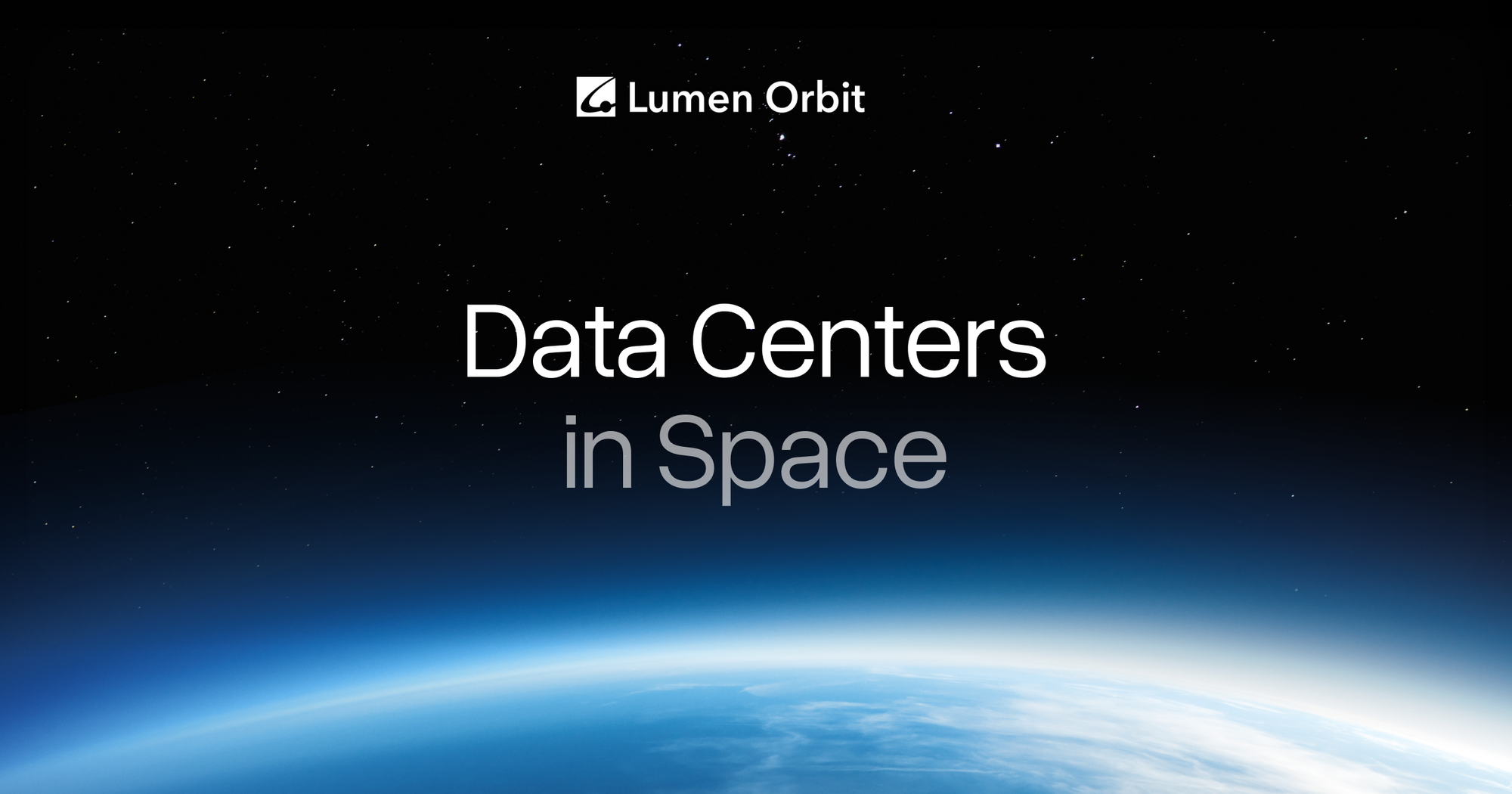Key Takeaways:
I. Space-based data centers offer compelling advantages in latency, energy efficiency, and scalability, potentially disrupting the traditional data center market.
II. Significant engineering challenges related to thermal management, radiation hardening, and data security must be overcome to realize the full potential of space-based data centers.
III. The intense investor interest in Lumen Orbit signals growing confidence in the long-term viability and potential disruptive impact of space-based data infrastructure.
Lumen Orbit, a startup aiming to build data centers in space, has secured an $11 million seed round at a $40 million valuation, attracting intense interest from over 200 venture capitalists. This surge in investment highlights the growing excitement surrounding the potential of space-based infrastructure to address the escalating demands for data storage and processing, particularly in the context of AI and other data-intensive applications. But what exactly are space-based data centers, and what are the technological and economic forces driving this investment? This article delves into the feasibility, challenges, and potential of this emerging industry, examining Lumen Orbit's venture within the broader context of the evolving data landscape.
The Promise of Space: Rethinking Data Centers
Latency, the delay in data transmission, is a critical performance metric, especially for real-time applications. Space-based data centers in LEO can significantly reduce latency compared to terrestrial facilities. Starlink, for example, demonstrates latencies of 20-40 milliseconds, rivaling or exceeding terrestrial broadband. Further reductions are anticipated through optimized data paths and laser communication systems, potentially enabling near real-time global data transfer.
Energy consumption is a major operational cost for data centers. Space offers access to abundant and consistent solar power, a clean and renewable energy source. While launch costs are significant (estimated at $10 million for launch and solar infrastructure), the absence of ongoing electricity bills (which can reach $140 million annually for a terrestrial data center) presents a compelling long-term economic advantage, along with a smaller environmental footprint.
Cooling is another major challenge for terrestrial data centers, requiring substantial energy and complex systems. The vacuum of space provides a naturally efficient cooling environment due to rapid heat dissipation. This inherent advantage reduces the need for complex cooling infrastructure, leading to lower operational costs, increased reliability, and a smaller carbon footprint.
Space offers virtually unlimited scalability for data center deployments, unconstrained by land availability or geographical limitations. This allows for the construction of massive, multi-gigawatt compute clusters, as envisioned by Lumen Orbit, to meet the escalating demands of data-intensive applications like AI, machine learning, and high-performance computing.
The Harsh Realities of Space: Technical Hurdles and Solutions
The extreme temperature fluctuations in space, from intense solar radiation to frigid darkness, pose a significant challenge for thermal management. Advanced materials with high thermal conductivity, passive cooling techniques that utilize radiative heat transfer, and innovative liquid cooling systems are being developed to maintain optimal operating temperatures and protect sensitive electronic components.
The harsh radiation environment of space can damage electronic components, requiring specialized radiation-hardened hardware. This involves using radiation-tolerant materials and design techniques to mitigate the effects of high-energy particles. However, radiation hardening adds complexity and cost to the development and deployment of space-based infrastructure.
Data security is paramount for space-based data centers. Robust encryption algorithms, multi-factor authentication, and intrusion detection systems are crucial for protecting sensitive data from cyber threats. Physical security measures are also essential to safeguard against potential sabotage or physical compromise of the infrastructure in the remote and potentially hostile environment of space.

Deploying and maintaining data centers in space presents significant logistical and regulatory challenges. Launching and assembling large structures in orbit requires advanced robotics and complex maneuvering. International cooperation is essential to establish clear regulatory frameworks for orbital debris mitigation, spectrum allocation, and responsible data governance in space.
Investing in Space: Data Centers and the Future of the Cloud
The private space sector has experienced a dramatic surge in investment, with over $70 billion flowing into space-related ventures in 2021 and 2022. This influx of capital reflects growing confidence in the commercial potential of space-based technologies, including data centers. Lumen Orbit's successful $11 million seed round, attracting interest from 200 VCs, demonstrates the increasing appetite for investment in this emerging sector.
Several factors are driving this investment trend. The space economy is projected to reach $1.8 trillion by 2035, while global data demand is expected to grow by 60% over the same period. Space-based data centers, with their potential advantages in scalability, energy efficiency, and reduced latency, are well-positioned to capitalize on this growth, potentially disrupting the traditional data center market and reshaping the future of data management.
The Future of Data: Is Orbit the Answer?
The future of space-based data centers remains uncertain, with several potential scenarios unfolding. Rapid growth, driven by decreasing launch costs, successful technological development, and strong market demand, could see orbital data centers become a major player in the data processing landscape. However, persistent technical challenges, regulatory hurdles, or cybersecurity threats could hinder progress, leading to slower adoption or a more niche role. A hybrid approach, combining the strengths of terrestrial and space-based infrastructure, is also plausible. The ultimate trajectory will depend on the interplay of innovation, investment, and international collaboration. The convergence of data and space has opened up exciting new possibilities, and the coming years will determine whether space-based data centers truly take off or remain a promising but distant prospect.
----------
Further Reads
I. https://serverfault.com/questions/953169/what-is-the-latency-within-a-data-center-i-ask-this-assuming-there-are-orders-ocache - What is the latency WITHIN a data center? I ask this assuming there are orders of magnitude of difference - Server Fault
II. https://www.avalanche-technology.com/data-centers-in-space-stage-2-security-and-latency-of-data-in-space-and-in-transit/Data Centers in Space – Stage 2: Security and Latency of Data in Space and in Transit - Avalanche Technology
III. https://www.howtogeek.com/893134/6-reasons-we-should-move-our-data-centers-to-space/6 Reasons We Should Move Our Data Centers to Space

